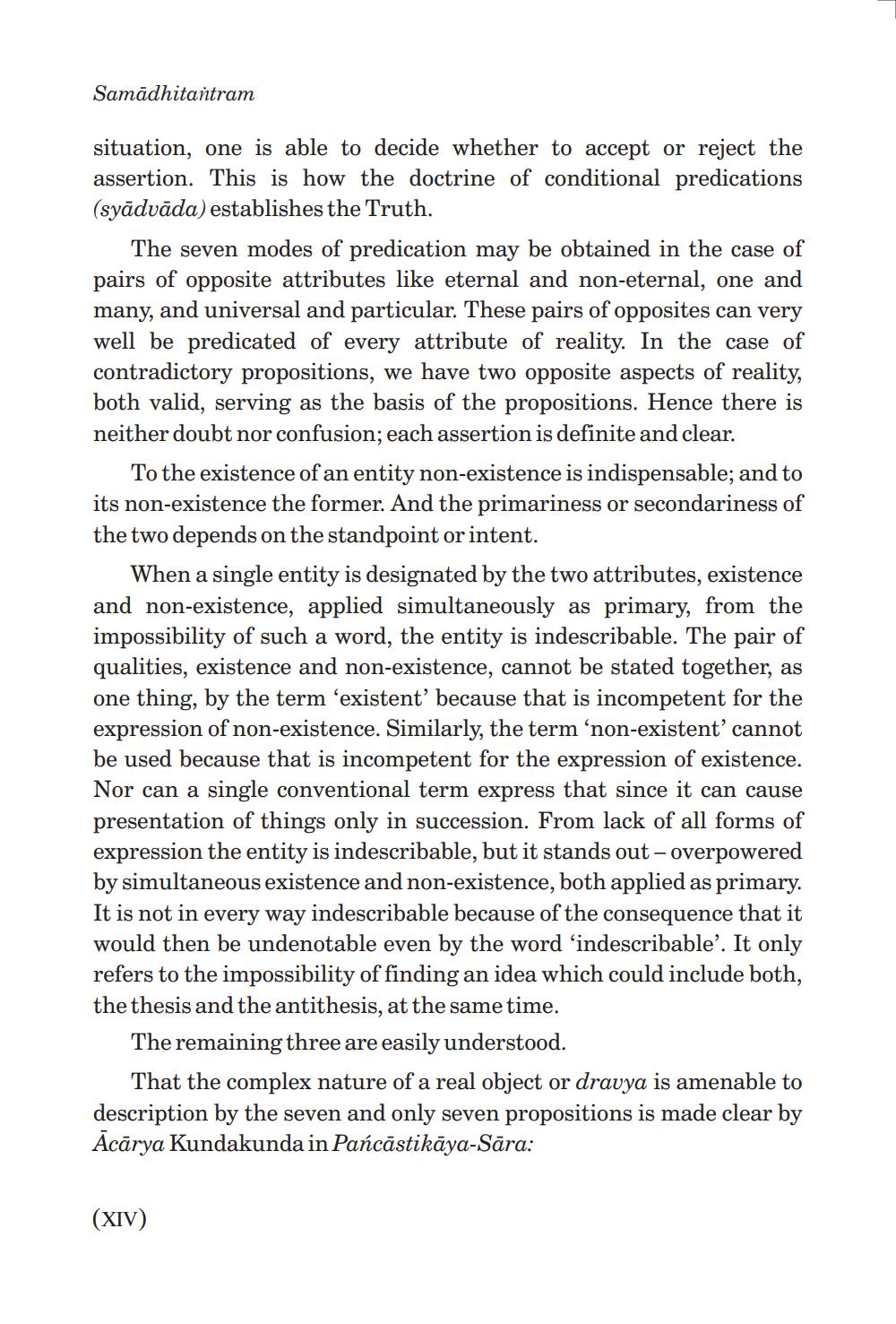________________
Samādhitantram
situation, one is able to decide whether to accept or reject the assertion. This is how the doctrine of conditional predications (syāduāda) establishes the Truth.
The seven modes of predication may be obtained in the case of pairs of opposite attributes like eternal and non-eternal, one and many, and universal and particular. These pairs of opposites can very well be predicated of every attribute of reality. In the case of contradictory propositions, we have two opposite aspects of reality, both valid, serving as the basis of the propositions. Hence there is neither doubt nor confusion; each assertion is definite and clear.
To the existence of an entity non-existence is indispensable; and to its non-existence the former. And the primariness or secondariness of the two depends on the standpoint or intent.
When a single entity is designated by the two attributes, existence and non-existence, applied simultaneously as primary, from the impossibility of such a word, the entity is indescribable. The pair of qualities, existence and non-existence, cannot be stated together, as one thing, by the term 'existent' because that is incompetent for the expression of non-existence. Similarly, the term ‘non-existent' cannot be used because that is incompetent for the expression of existence. Nor can a single conventional term express that since it can cause presentation of things only in succession. From lack of all forms of expression the entity is indescribable, but it stands out-overpowered by simultaneous existence and non-existence, both applied as primary. It is not in every way indescribable because of the consequence that it would then be undenotable even by the word 'indescribable'. It only refers to the impossibility of finding an idea which could include both, the thesis and the antithesis, at the same time.
The remaining three are easily understood.
That the complex nature of a real object or dravya is amenable to description by the seven and only seven propositions is made clear by Ācārya Kundakunda in Pańcāstikāya-Sāra:
(XIV)




